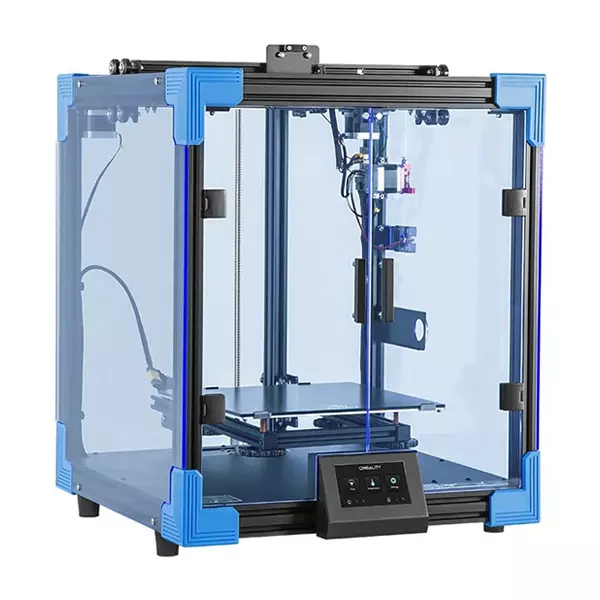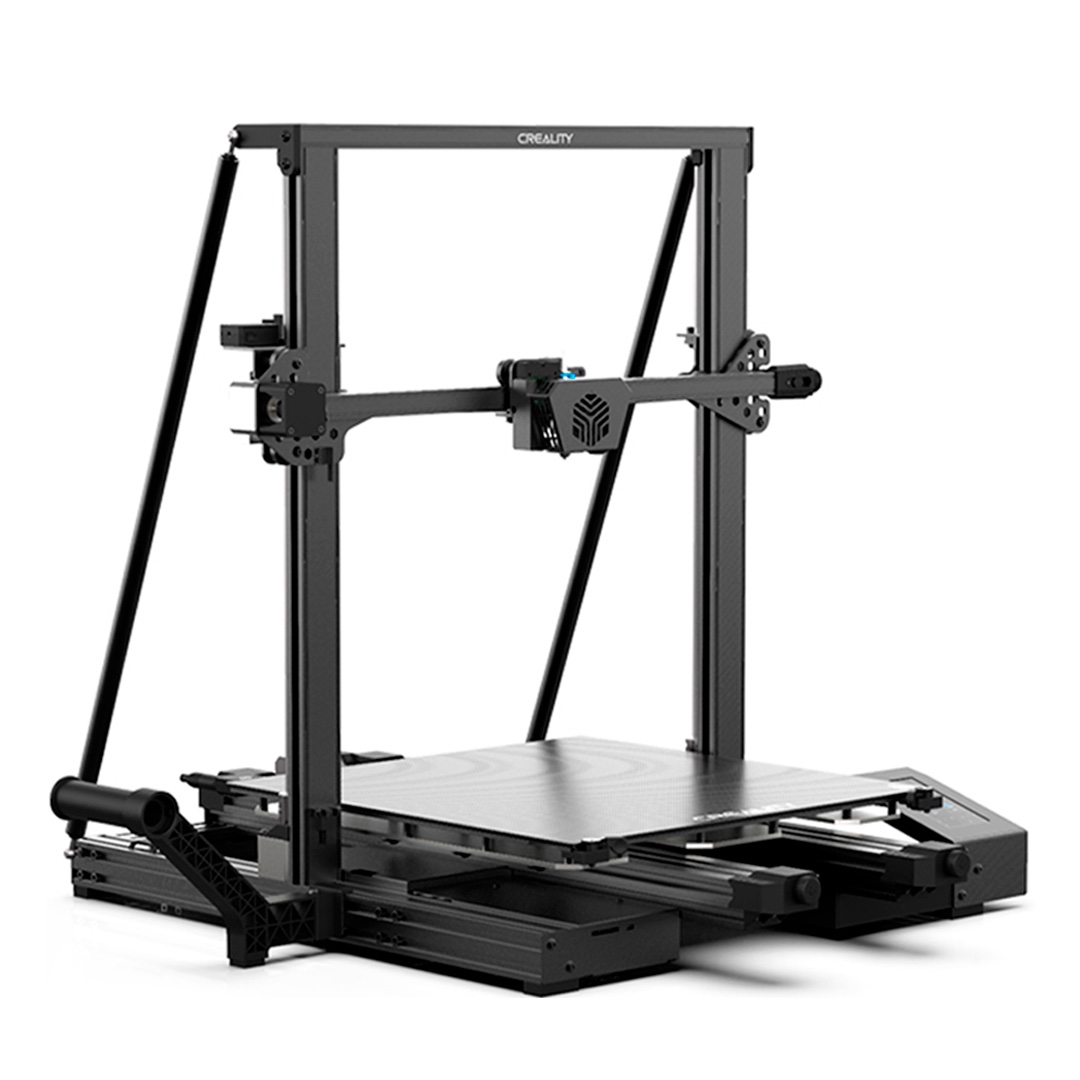Compare Ender 6 vs CR 6 Max
Comparison between the best 3D printers
Choose the best 3D printer at the best price. The cheapest 3D printers are here.
Buy a 3D printer here with 3D Fila.
 |
 |
|
| Model | Ender 6[BUY Ender 6] |
CR 6 Max |
| Printing Material | Filament | Filament |
| Buy Filament for Creality 3D Ender 6 | Buy Filament forCreality 3D CR 6 Max | |
| Estimated price | $499,00 | $700,00 |
| Manufacturer | Creality 3D | Creality 3D |
| Release Year | 2020 | 2021 |
| Print Volume [mm] | 250x250x400 | 400x400x400 |
| Printer Size [mm] | 495x495x650 | 725x640x691 |
| Weight [kg] | 22 | 14 |
| Power Loss Recovery | YES | YES |
| Enclosed printer | YES | NO |
| Bed Leveling | Manual | Automatic |
| Filament End Sensor | YES | YES |
| Bed type | Heated | Heated |
| Power supply system | Bowden | Bowden |
| Standard nozzle | 0,4 | 0,4 |
| Maximum Nozzle Temperature [°C] | 260 | 260 |
| Maximum Bed Temperature [°C] | 100 | 90 |
| Maximum printing speed [mm/s] | 150 | 100 |
| Filament holder | YES | YES |
| Camera for supervision | NO | NO |
| Recommended filaments | PLA, TPU, ABS, PETG | PLA, PETG |
| Recommended slicers | Cura, Simplify, Slic3r | Cura, Simplify, Slic3r, IdeaMaker |
| Maximum Resolution [mm] | 0,1 | 0,1 |
| Processor | 32 bits | |
| Display | Touchscreen TFT 4,3'' | Display touchscreen 4,3'' |
| Power Supply | 24V / 504W | 110/220V / 500W |
| Connectivity | SD / USB | SD / USB |
| Operating systems | Windows, Mac, Linux | Windows, Mac, Linux |
| Date of registration in the system | 2021-04-15 | 2022-11-04 |
| Release date | 2020 | 2021 |
| Extra features | The Creality Ender 6 stands out in the world of 3D printers with its CoreXY system, offering fast and high-quality prints. With a robust design, it has acrylic panels to protect against air currents, optimizing the printing of materials that require higher temperatures. It features a generic Creality hotend, effective up to ~240°C. Its differentials include 10mm GATES belts, promoting stability at high speeds, and a 360W power supply for reliable performance. The machine also has an intuitive user interface through a 4.3-inch touchscreen. | Crealitys CR-6 Max printer offers a large 400 x 400 x 400mm build area, perfect for larger projects without dividers. Its auto-leveling system and force sensor simplify setup. It has a 4.3-inch touchscreen and convenient features like a tool drawer and filament holder. Plus, its modular hotend, redesigned extruder, and silicon carbide-coated build plate improve print quality. |
| Support for multiple colors and materials (AMS and CFS) | NO | NO |
Notes * |
||
| Cost-benefit | 7 / 10 | 6 / 10 |
| Hardware | 2.5 / 10 | 2 / 10 |
| Tela | . | . |
| Print volume | 4 / 10 | 4 / 10 |
| Performance | 1 / 10 | 1 / 10 |
| [BUY Ender 6] |
Conclusion |
| In comparing the Creality Ender 6 and the CR-6 Max 3D printers, several factors come into play that can influence a buyer's decision. The **Ender 6** emerges as a strong contender, particularly due to its lower price point and faster maximum printing speed. With features that include a robust CoreXY design, an enclosed build space that helps maintain temperature stability during prints, and a reliable auto-recovery system during power loss, it offers a great balance of performance and affordability. Additionally, it supports a variety of materials and has a user-friendly 4.3-inch touchscreen interface, making it suitable for both beginners and experienced users alike. On the other hand, the **CR-6 Max** boasts a larger print volume, which can be advantageous for users needing to produce larger models without the need for assembly. It also offers an automatic bed leveling system that simplifies the setup process, appealing particularly to new users. However, at a higher cost, its features might not provide a justifiable advantage compared to the Ender 6 for users who don't require the added print volume. In summary, if budget, speed, and an enclosed printing environment are priority factors, the **Ender 6** represents a better overall choice. Conversely, if the need for a larger print area and ease of setup through automatic bed leveling is more critical, the **CR-6 Max** can be a suitable option, albeit at a higher price. Ultimately, the decision should align with the user's specific printing needs and budget constraints. |

